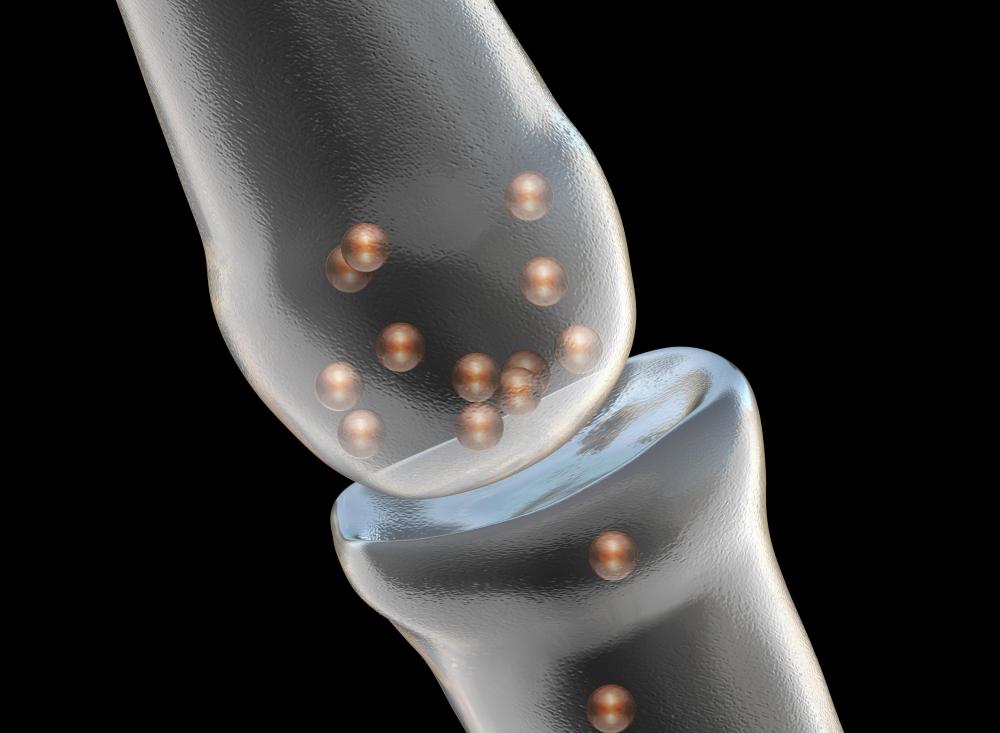At TheHealthBoard, we're committed to delivering accurate, trustworthy information. Our expert-authored content is rigorously fact-checked and sourced from credible authorities. Discover how we uphold the highest standards in providing you with reliable knowledge.
What Is the Function of a Synapse?
A synapse provides a connection between neurons that allows sensory information to flow between them. Sensory information travels along a specialized projection of a neuron until reaching a synapse, which acts like a junction terminal. It's the function of this connection to allow sensory impulses to travel in a single direction, divide impulses between multiple neurons, or merge impulses onto a single neuron. There are three types of synapses: axodentritic, which are found on dendrites; axosomatic, which are found on cell bodies, and axoaxonic, which are found on axons.
The nervous system, which is a system of cells, tissues, and organs that transmit and process sensory information to and from different parts of the body, is partially made up with synapses. There are two distinct types of connections: chemical and electrical. A chemical synapse transmits sensory information by releasing molecules called neurotransmitters next to another neuron. The molecules then bind to the receptor sites of the receiving neuron. An electrical synapse conducts electrical impulses between neurons, and can conduct sensory information faster than chemical synapses.

Synapses can be broken up into three basic parts. The first is called the pre-synaptic ending that contains cell organelles, mitochondria, and neurotransmitters. The second part is called the post-synaptic ending, which contains receptors that permit the binding of neurotransmitters. Post-synaptic endings can occur on dendrites, axons, and cell bodies. The third part is a space called a synaptic cleft that divides the pre-synaptic and post-synaptic endings.

Neurons are special cells that are sometimes called nerve cells or neurones, and they communicate with each other via synapses. Typically a neuron has a cell body called the soma, which is bulbous in shape and contains organelles. Neurons transmit impulses via two specialized projections called dendrites and axons. Dendrites are branch-like projections that carry impulses to the neuron's cell body or soma. Axons, which are long and narrow in shape, carry impulses away from the soma.

There are many different types of neurons in the body, and they're classed by the direction in which they send information. Sensory, or afferent, neurons respond to touch, sound, and light, and carry the sensory information to the central nervous system. Motor, or efferent, neurons receive signals from the central nervous system and send them to muscles and glands. Interneurons, which are also known as relay neurons, connector neurons, local circuit neurons, or association neurons, connect sensory neurons to motor neurons.
AS FEATURED ON:
AS FEATURED ON:















Discuss this Article
Post your comments